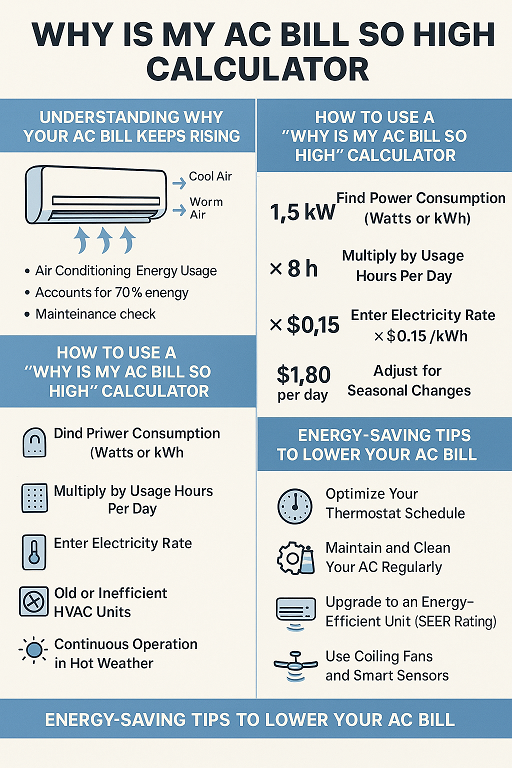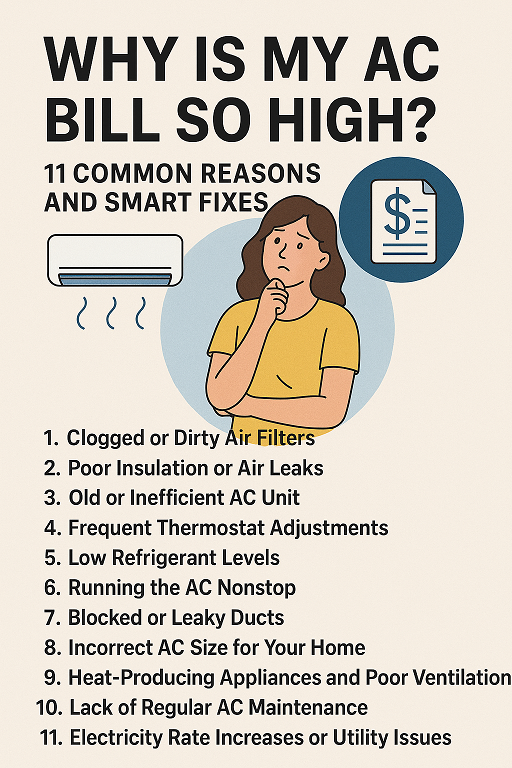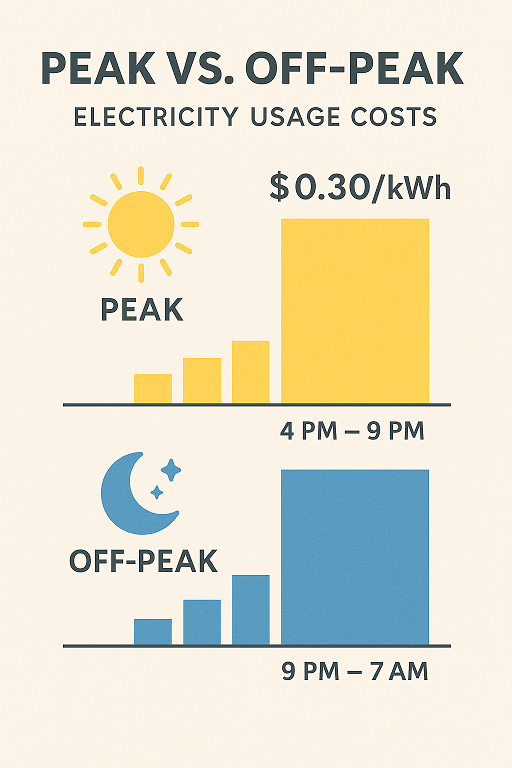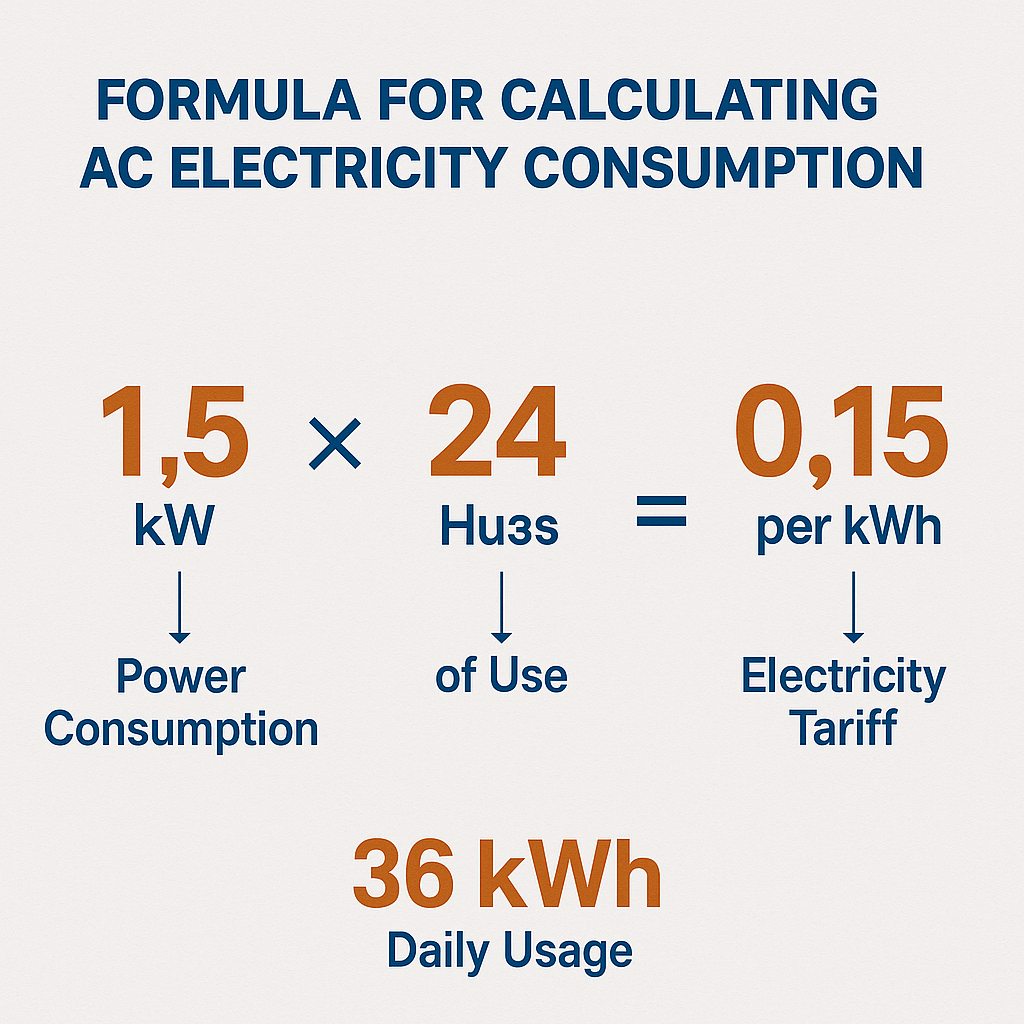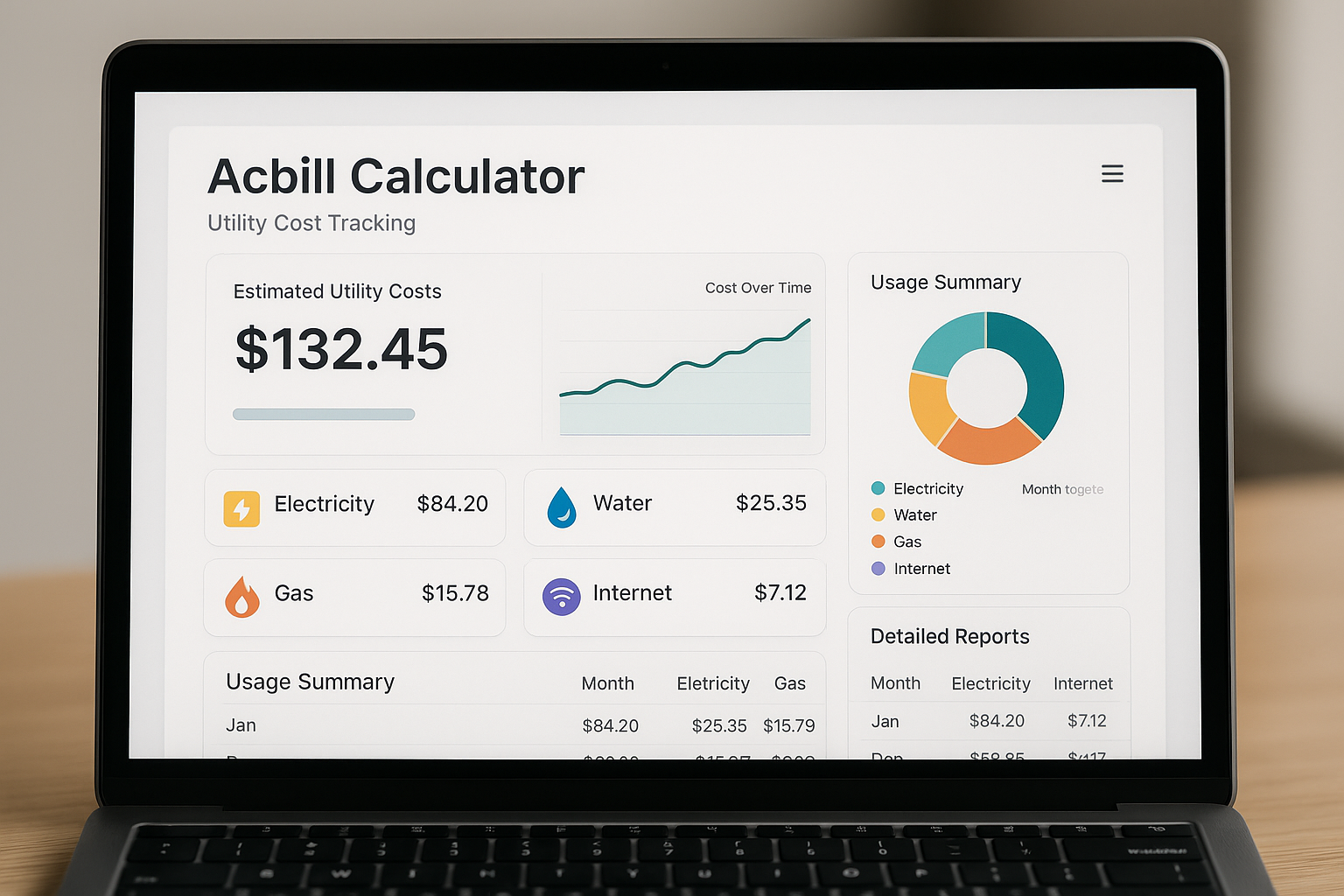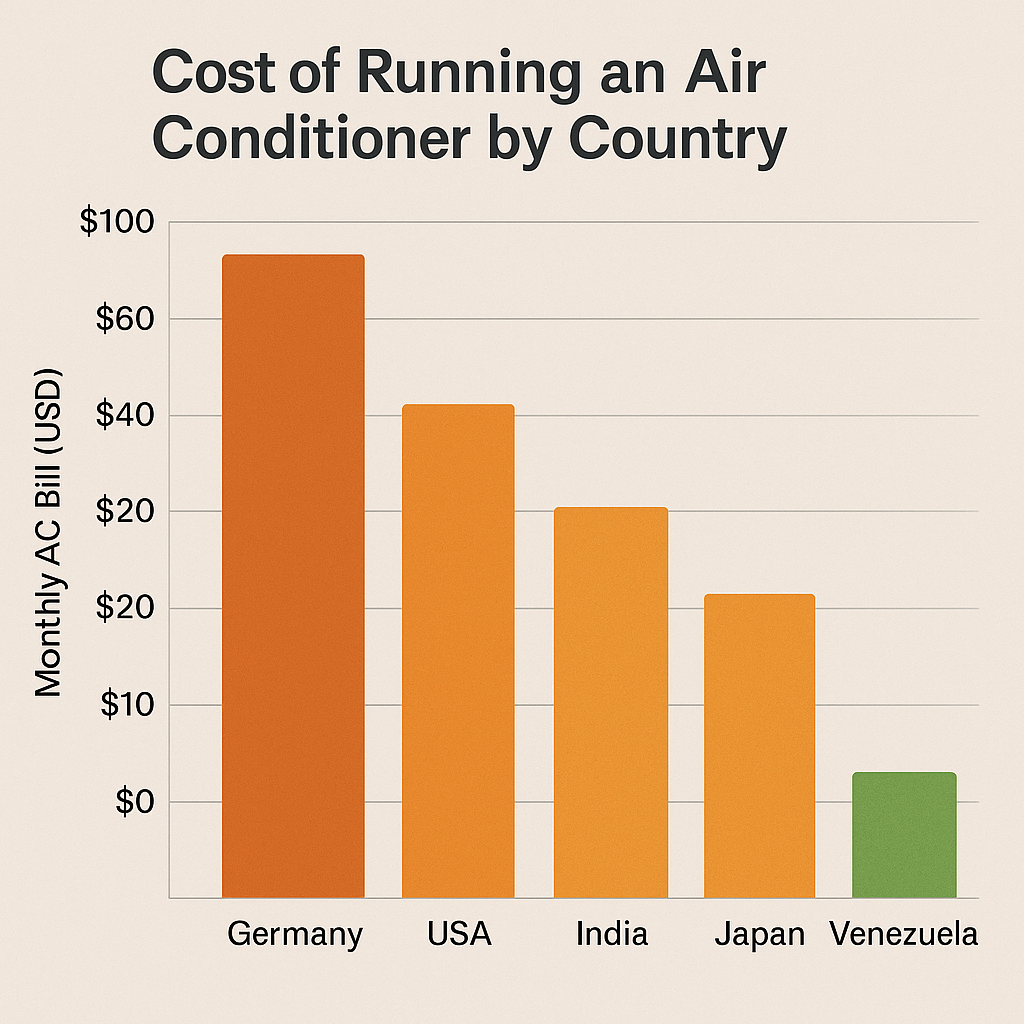
Electricity Cost per kWh by Country (2025): Shocking Global Comparison & Your AC Bill Explained
Introduction: Why Electricity Cost per kWh Matters
Electricity is no longer a utility but the basis of modern life. From smartphones to mobile industries, households, businesses and even national economies can be radically affected by the price per kilowatt-hour from country to country. Knowing how much individuals around the world spend on energy not only illuminates economic inequality around the world, but also enables us to understand how climate, politics and the use of renewable energy sources affect our electricity bills.
The price of electricity around the world is changing faster than at any time in history in 2025 due to climate change, geopolitical tensions, and the shift to clean energy. How do you find out how much electricity costs per kilowatt-hour around the world - and what that means on your home AC bill?
What Is Electricity Cost per kWh?
Understanding kWh (Kilowatt-hour)
A unit of energy is called a kilowatt-hour (kWh). When you run a 1,000-watt appliance (such as a space heater) for one hour, 1 kWh is used. Utility companies charge customers based on their kWh usage.
For example:
- A laptop uses about 0.05 kWh per hour.
- Depending on size and efficiency, an air conditioner (AC) can consume 1- 2kWh of power per hour.
How Utility Companies Calculate Your Bill
Your monthly electricity bill depends on:
- Base tariff per kWh (varies by country).
- Taxes and surcharges (environmental fees, grid charges).
- Usage rate (lots of countries charge more as you use more).
Global Electricity Cost per kWh by Country
Average Electricity Cost Worldwide (2025 Update)
The average international price of electricity at the beginning of 2025 is 0.16 per kilowatt-hour, but this hides wide variations.
Country | Average Cost per kWh (USD)
Germany | $0.43
Denmark | $0.41
Japan | $0.29
United States | $0.17
India | $0.09
China | $0.11
Venezuela | $0.005 (government-subsidized)
(Source: IEA, World Bank Energy Data 2025)
Countries with the Highest Electricity Prices
- Germany and Denmark - Driven by renewable energy surcharges and modernising the grid.
- Belgium - High taxes and reliance on imports.
- UK - The effects of the energy crisis do not end with Brexit.
Countries with the Lowest Electricity Prices
- Venezuela - Power- The government subsidizes power very much.
- Iran - Low domestic tariffs due to oil and gas reserves.
- Qatar & Saudi Arabia - Abundant fossil fuel subsidies.
Cost per kWh by Continent (Regional Breakdown)
- Europe: Highest average (~$0.28 per kWh).
- Asia: Large variation, high prices in Japan and low in India.
- North America: Moderate (~$0.15–0.18 per kWh).
- Africa: Inequal, South Africa at ~0.14, however, many countries have recurrent outages.
Currency Conversion & Cost Adjustments
Why Prices Differ by Currency & Economy
Exchange rates matter. The amount paid by a European family per kWh is 0.30 euro, which will translate differently according to the USD strength.
Purchasing Power Parity (PPP) & Energy Affordability
Even though the price per kWh is the same in the two countries, the affordability differs. A Norwegian household may spend more on a unit, but due to higher wages, electricity is more affordable than for a household in India.
Climate Impact: How Weather Affects Your AC Bill
Hot Climates vs. Cold Climates
- AC bills are the leading types of electricity in tropical countries.
- The primary cause of high energy is heating in cold climates.
Seasonal Fluctuations in Energy Use
- Summer → AC bills spike.
- Winter → Heating increases costs.
- Spring & autumn → Months of minimum energy use.
Electricity Tariff Structures Around the World
Fixed Tariffs vs. Variable Tariffs
Electricity pricing models vary widely:
- Fixed Rates: You are charged a uniform cost per kWh no matter how much energy you use. This is a widespread practice for countries with good legal standards.
- Variable: Prices change with demand, season or cost of fuel. For example, in California (USA power is more expensive during peak hours.
Renewable Energy Impact on Tariffs
Countries that spend heavily on solar and wind power impose higher taxes on consumers for greener fuels. Yet, in the long run, renewables could lower wholesale electricity prices, as in Portugal and Spain.
Case Study: Cost of Running an Air Conditioner by Country
AC Power Consumption Explained
One of the most energy guzzlers is the air conditioners. On average:
- A one-ton split AC has a consumption of approximately 1 kWh/h.
- Operating it 8 hours a day = 240 kWh/month.
Sample Calculation of AC Running Cost in Different Countries
As an example, how much would the AC bill per month be in various areas (240 kWh/month):
Country | Average Cost per kWh | Monthly AC Bill
Germany | $0.43 | $103.20
USA | $0.17 | $40.80
India | $0.09 | $21.60
Japan | $0.29 | $69.60
Venezuela | $0.005 | $1.20
Important Note: AC prices in Germany can be 5 times higher than in India, proving that the price per kilowatt hour can have a huge impact on households.
How to Lower Your AC Bill Despite Rising kWh Costs
Smart Thermostats & Energy Efficiency
Smart thermostat can save up to 20 percent of energy wastage. Brands such as Nest or Ecobee will automatically adjust cooling when you are not at home.
Alternative Cooling Methods
- Ceiling fans - consume 90 percent less power compared to AC.
- Good insulation - Holds cold air.
- Energy Star-rated AC units - Up to 40% more efficient.
Future Trends: Where Are Electricity Costs Heading?
Impact of Renewable Energy Adoption
Solar farms, offshore wind and hydro-electric power will make countries with such investments to stabilize or lower the long-term electricity prices.
Geopolitical Events & Energy Markets
War, sanctions, and energy shortages have led to instability. For example, gas shortages following the Russia-Ukraine conflict have led to dramatic increases in electricity prices in Europe.
Analysts predict that the average global electricity price could reach equilibrium between 0.14 and 0.18 cents per kilowatt-hour by 2030, thanks to the scale of renewable energy.
FAQs on Cost per kWh by Country
1. Within 2025, which country is the cheapest in electricity?
Government subsidies have pushed electricity to the lowest price in Venezuela, at a low as $0.005 per kWh.
2. What is so costly about electricity in Germany?
High tariffs in Germany are due to a combination of costs of transitioning to renewable energy, taxes and grid modernization costs.
3. What is the average cost of running an AC in the US?
A typical 1 ton AC with a load of 8 hours/day would cost almost 40-50/month in the US, state and tariff dependent.
4. Do renewable energy sources make electricity cheaper?
Yes, in the long term. Although the start-up cost on infrastructure is high, solar and wind can lower wholesale prices substantially.
5. Why are the prices of electricity varying in countries?
Prices are based on the availability of fuel, government subsidies, energy infrastructure and demand based on the climate.
6. What do I do to save money on my AC bill?
Use smart thermostats, energy-efficient AC units, ceiling fans, and proper home insulation.
Conclusion: Understanding Global Electricity Prices
Country-specific costs per kilowatt-hour are not a number in isolation: they are an indicator of each country's economy, climate and energy policies. There are some who are subsidized or low-cost renewables-powered, and there are some who are affected by high tariffs resulting from imports and infrastructure.
